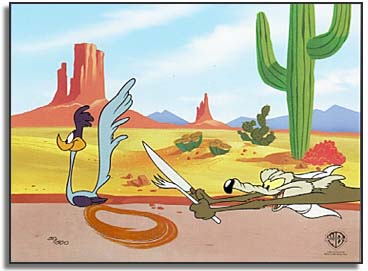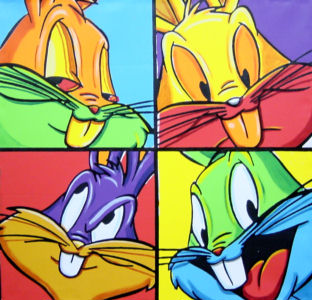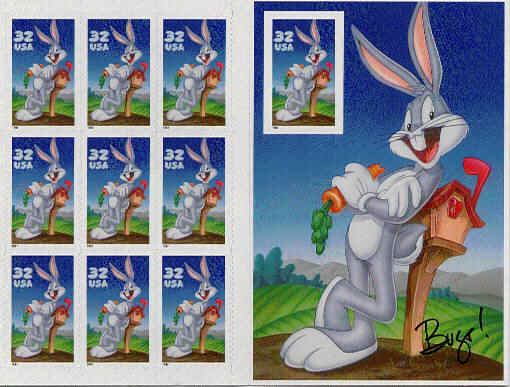

In this chapter, we look at the strongest Disney competitor in the 1940's, the Termite Terrace animation unit at Warner Brothers. Since they were actually able to overtake and pass Disney in popularity of their cartoon shorts, I'd like you to focus overall on how they differentiated their product from Disney's and how the social/political/economic climate of the country contributed to their success.
[Note: If you want an early look at the presentation topics, click here. We'll be signing up in class on Thursday.]
How did the Warner Brothers animation unit get started in 1929-30?
Where had the original animation team trained? How did this influence their output?
What were the strengths of the Bosko cartoons? What kept him from becoming a star on the level of Mickey Mouse, on whom he was modelled?
In the early 1930s, a pair of reviews in the Motion Picture Herald points out the salient differences between the Looney Tunes and Disney's Silly Symphonies. What were they?
When Harmon-Ising split with Leon Schlesinger, who was on the team of animators who replaced them? How many of these men would go on to become famous as animation directors? (As you read, see if you can figure out what it was about the Warner Brothers studio that encouraged this development.)
How did Tex Avery come to join what later became known as Termite Terrace? What did he bring to the mix already there?
There were five directors
who contributed subtantially to the Looney Tunes and Merry Melodies. Be
ready to sketch the career and give specific examples of the work of each
of the following: 
Bob Clampett
Frank Tashlin
Fritz Freleng
Tex Avery
Chuck Jones
What productions did the studio make to specifically help the war effort during World War II?
Why didn't the cartoons of Tweety and Sylvester and Pepe LePew ever reach the heights of popularity gained by Bugs, Daffy and Porky?
What made Duck Amuck such a critical success? How about What's Opera, Doc?
One of the distinguishing characteristics of Chuck Jones's cartoons, according to his layout man, was that "the style came out of the cartoon, instead of vice versa." This is precisely what Schickel sees as lacking in the Disney cartoons; what makes it a valuable characteristic for Jones?
In 1948, Jones invented Wile E. Coyote and his nemesis, the Road Runner. How did a new sense of graphic design contribute to the success of the series? What rules did Jones invent for himself in animating the Coyote? What other factors, in your opinion, entered into the popularity of the series with both critics and the public?
"A fanatic is someone who redoubles his effort when he's forgotten his aim," Jones says, quoting Santayana. How did he use the Coyote to universalize this idea?
As Warner Brothers moved
through the 1950s, animators came and went--and came back again, but it
was clearly the beginning of the end of the Looney Tunes. What different
experiments did the studio try to keep animated shorts profitable? Which
worked and which didn't?
In discussing the Warner studio, we'll be watching: